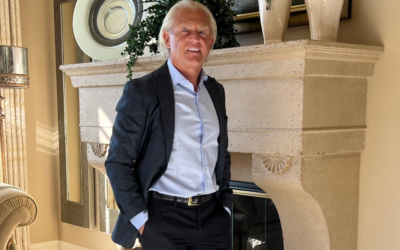In our journey of outlining the seven key prerequisites for success in business, we have already discussed the critical role a well-defined Mission and Vision plays. Following that, the next logical step is to identify your organization’s “Reason To Be” – the unique competitive advantage that will enable you to stand out in the marketplace.
Defining Your Competitive Advantage
In today’s hyper-competitive business environment, brimming with talented individuals and brilliant ideas, it’s not enough to merely exist. You need a distinct competitive advantage, a compelling “Reason To Be”, that enables you to stand head and shoulders above the crowd. A well-defined competitive advantage allows you to secure your position in the market, attract loyal customers, and ultimately drive business growth.
Understand Where You Fit
There are three primary categories of competitive advantage that businesses can leverage: cost leadership, differentiation, and customer relationships. Let’s delve deeper into each of these categories.
The first avenue to establish a competitive advantage is to become a low-cost provider. By mastering economies of scale, streamlining operations, and optimizing efficiencies, businesses can deliver more value for less, thereby becoming the go-to option for price-conscious consumers. Retail giants like Walmart and Amazon are excellent examples in this category. Their vast supply chains, efficient inventory management, and aggressive pricing strategies enable them to offer products at prices few competitors can match.
However, competing solely on price is a double-edged sword. While it may initially attract customers, it can also lead to a ‘race to the bottom’, where slim margins leave little room for error or innovation.
Therefore, it’s essential to balance cost leadership with other forms of competitive advantage to ensure sustainable business growth.
The second category of competitive advantage is differentiation, where businesses generate an emotional demand based on factors other than cost. By delivering unique, superior-quality products, unrivaled customer service, or a prestigious brand image, companies can command premium prices and foster brand loyalty. Apple and Louis Vuitton are standout examples here. Apple’s commitment to innovation, aesthetics, and user experience, and Louis Vuitton’s prestige and craftsmanship, allow them to achieve enormous premiums, driven by the emotional demand they generate.
Lastly, building synergistic relationships with customers can also provide a competitive advantage. Becoming an integral part of your customer’s operations can cultivate customer loyalty, drive repeat business, and establish yourself as an indispensable partner. Qualcomm’s success, largely built on their integral supply relationship with Apple, exemplifies this strategy. By supplying critical components for Apple’s devices, Qualcomm has secured a consistent demand for its products.
Align Competitive Advantage with Mission and Vision
While identifying your competitive advantage is critical, it’s equally crucial to align this advantage with your Mission and Vision. Your ‘Reason To Be’ should serve as a bridge that connects your current capabilities (Mission) with your long-term aspirations (Vision). This alignment ensures that your competitive advantage is not just a short-term gimmick but a sustainable strategy that propels your business towards enduring success.
Furthermore, a well-articulated competitive advantage serves multiple purposes. It not only differentiates you from competitors but also guides your strategic decisions, shapes your brand image, and communicates your unique value to customers. It provides a lens through which potential customers view your business, helping them understand why they should choose you over others.
Continually Reassess and Modify
Your competitive advantage is not static. As markets evolve, competition intensifies, and customer preferences change, you must continually reassess your ‘Reason To Be’ and adjust your strategy accordingly. Continuous innovation, regular customer feedback, and diligent market research are essential to maintaining and enhancing your competitive edge.
Summary
In summary, identifying and harnessing your competitive advantage, or ‘Reason To Be’, is an essential element of business success. It sets the stage for the subsequent steps of building an effective organizational structure, assembling a strong team, developing strategic plans, setting performance objectives, and fostering a culture of adaptability – all of which we will be discussing in the upcoming articles. Business success is a complex puzzle with many pieces. However, by combining a well-defined Mission and Vision with a robust competitive advantage, you’ll have a solid foundation on which to construct your success story.




